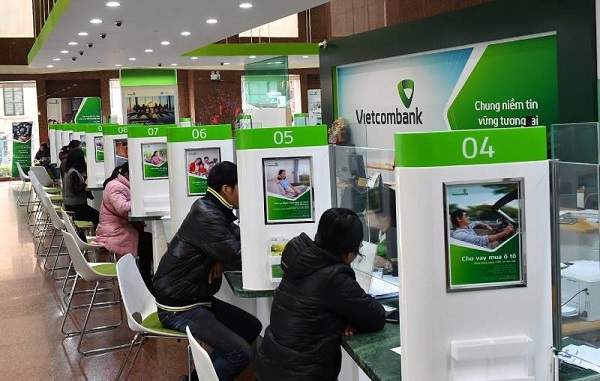 Economy
Economy

Bank profits are forecast to be the bright spot in the fourth quarter 2022 financial report season, which takes place after the Lunar New Year.

|
| Customers at a Vietcombank (VCB) branch. By the end of 2022, Vietcombank's pre-tax profit reached nearly VNĐ36.8 trillion (US$1.6 billion), an increase of 39 per cent compared to 2021. Photo vietcombank |
HÀ NỘI — Bank profits are forecast to be the bright spot in the fourth quarter 2022 financial report season, which takes place after the Lunar New Year. This will help bank stocks flourish.
Although the financial statements for the fourth quarter of 2022 have not been announced, according to analysts' forecasts, in 2022, the picture of bank profits will have a strong divergence, along with the return of the commercial banking group with State capital. After two years of "holding" growth to support customers affected by the COVID-19 pandemic, the profit of this banking sector has increased sharply again.
By the end of 2022, Vietcombank's pre-tax profit reached nearly VNĐ36.8 trillion (US$1.6 billion), an increase of 39 per cent compared to 2021. This figure at BIDV was VNĐ22.56 trillion, an increase of nearly 80 per cent and at VietinBank was VNĐ20.5 trillion, an increase of 21.5 per cent compared to 2021.
Credit poured into priority areas, interest rates controlled at a reasonable level, and good asset quality are the reasons why State-owned commercial banks are granted more credit room by the State bank, thereby improving business results. In 2022, the credit of these banks all increased sharply, while bad debts were strictly controlled.
By the end of 2022, BIDV's bad debt ratio was only 0.9 per cent, bad debt coverage ratio reached 245 per cent, the highest level in recent years, and the balance of the risk reserve fund was up to VNĐ40 trillion. At Vietcombank, the bad debt ratio was only 0.67 per cent and the bad debt coverage was also above 465 per cent. At VietinBank, bad debt was also only 1.2 per cent, bad debt coverage ratio reached approximately 190 per cent, up 10 per cent compared to 2021.
The private joint stock commercial banks have not yet announced their profits, but it is forecast that the top banks will still maintain a positive growth rate, especially those with not too large corporate bond outstanding loans. Meanwhile, small joint stock commercial banks and banks with large bond outstanding loans are likely to see lower profits in the fourth quarter of 2022.
A recent survey by the State Bank of Việt Nam showed that business results of many credit institutions in the fourth quarter of 2022 did not meet expectations. However, 80 per cent of credit institutions predict that the overall business situation in 2022 will improve compared to 2021.
According to VNDirect analysts, in 2022, the banking industry's profit increased by about 32 per cent. In 2023, the banking sector's profit growth will decelerate, growing at only about 10 per cent due to slowing credit growth, narrowing net profit margin (NIM) and rising credit costs. Even so, opportunities are still open for banks with cheap valuations, healthy asset quality, high capital adequacy ratio, healthy credit structure, and restructuring. These will be the banks prioritised by the State Bank in the credit room grant in 2023.
Nguyễn Hoài Phương, Investment Director, who runs the Việt Nam Market Access Equity Fund (VESAF) under VinaCapital, said that in 2023, the VESAF Fund will consider increasing the proportion of bank stocks, especially banks with competitive advantages in terms of liquidity ratios, diversified loan portfolios and good risk management.
In 2022, banking stocks went through a turbulent period, with only two stocks increasing, namely Vietcombank (VCB) and Bank for Investment and Development of Việt Nam (BID), 25 out of 27 stocks declined, with some decreased by more than 50 per cent. The liquidity of bank stocks also dropped sharply. Even so in 2023, banking stocks are expected to lead the rising wave again after hitting 10-year lows in 2022. However, most likely, the market will have challenges in the first half of 2023, before growing in the second half of the year.
Analysts appreciate banks that have a high proportion of retail lending and demand deposits, or current account savings account (CASA), as well as good liquidity buffers and risk provisions.
In the first week of 2023, bank stocks traded actively. Lê Đức Khanh, analyst at VPS Securities Company, said that it is still too early to judge the growth trend of bank stocks, but most likely, the banking group is leading the market to 1,060 - 1,080 - 1,100 points. — VNS